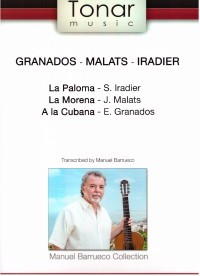Products


| Image | Product Name ↑ ↓ | Author ↑ ↓ | Product Price ↑ ↓ | Category | Buy |
|---|---|---|---|---|---|
 | Granados / Malats / Iradier Transcriptions | BARRUECO, Manuel | £14.95 | Printed editions » Guitar Solos: Classical Anthologies |
This site uses cookies to make the site run smoothly and power functions such as the enquiry basket. We use third-party performance cookies to store anonymised information on how you use our site in order to improve your experience. You may accept or decline these cookies. You can also manage your choices via our Customise Cookies page.
